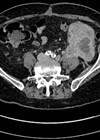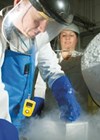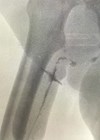Features archive for 2023
Urology around the world: Myanmar
In this article the author, a urologist from Myanmar, discusses the presentation, diagnosis and management of a condition common in his country. Urethral orifice stones Urolithiasis is one of the most common urological conditions, usually involving the kidneys, ureters and...
Clear cell urothelial carcinoma: a highly aggressive morphological variant in the bladder and upper urinary tract
Clear cell urothelial carcinoma (CCUC) is a rare morphological variant of transitional cell carcinoma (TCC). It can occur anywhere along the urothelial tract and is characterised histologically by high grade carcinoma with an abundance of clear, glycogen-rich cytoplasm [1]. Alternative...
Bladder Health UK
- CHARITY FOCUS - Bladder Health UK is a national patient support charity that has been communicating with bladder illness sufferers for 30 years. The charity offers a lot of resources to give help, educate and inform, including webinars, study...
An update on robotic surgery in urology
The early adoption of new technology has long been a trademark of urological surgeons. Like the introduction of the cystoscope, lasers and flexible endoscopy, the field of urology has witnessed a revolutionary transformation with the advent of robotic surgery. Robotic-assisted...
A guide to local anaesthetic transperineal prostate biopsy
In the UK, nearly 100,000 men undergo a prostate biopsy annually, a figure projected to double in the next decade [1]. In recent years, we have observed a paradigm shift in urological practice in numerous UK hospitals. The conventional transrectal,...
New techniques in UTI diagnosis
Urinary tract infection (UTI) is a common reason for seeking medical care in both primary and secondary settings. Half of women will have at least one episode of cystitis in their lifetime, and a third of them will have experienced...
Using cryopreserved prepubertal testis tissues – are we getting warmer?
The rising incidence of childhood cancer coupled with increasing survivorship means there is a growing population of childhood cancer survivors with unmet health needs. In the UK around 1 in 500 children and young people are survivors of childhood cancer....
Management of urological issues following genital gender affirmation surgery for individuals assigned female at birth
Gender incongruence arises when there is a mismatch between an individual’s gender identity and their sex assigned at birth. Genital gender affirmation surgery (GAS) is the final step of transition for transgender and non-binary individuals who experience gender incongruence. This...
GentleCath™ intermittent catheters
We know that Urinary Tract Infections (UTIs) are the biggest issue for catheter users. In the United Kingdom, 14 million people suffer from continence problems1. Although hydrophilic coated catheters (2nd generation) brought benefits compared to uncoated catheters (1st generation), users...
A sigma six approach to improving nephrostomy and antegrade stent services at a district general hospital – an audit project
As hospitals merge into larger trusts there becomes a centralisation of some services. Interventional radiology (IR) has been one of those services. Our district general hospital runs bi-weekly lR lists following service centralisation. Urology and IR most commonly liaise on...
The impact of menopause on bladder symptoms
The menopause is a natural process of ageing when the ovaries completely stop producing reproductive hormones (oestrogen and other sex steroids), and there are no monthly periods for 12 consecutive months. It normally occurs between the ages of 45-55 years...
Penile augmentation using injectable filler
Penile size is a major topic for many men and a source of anxiety throughout history. The common belief that a large penis is necessary to impress and satisfy their sexual partners has led to the notion that ‘bigger is...














